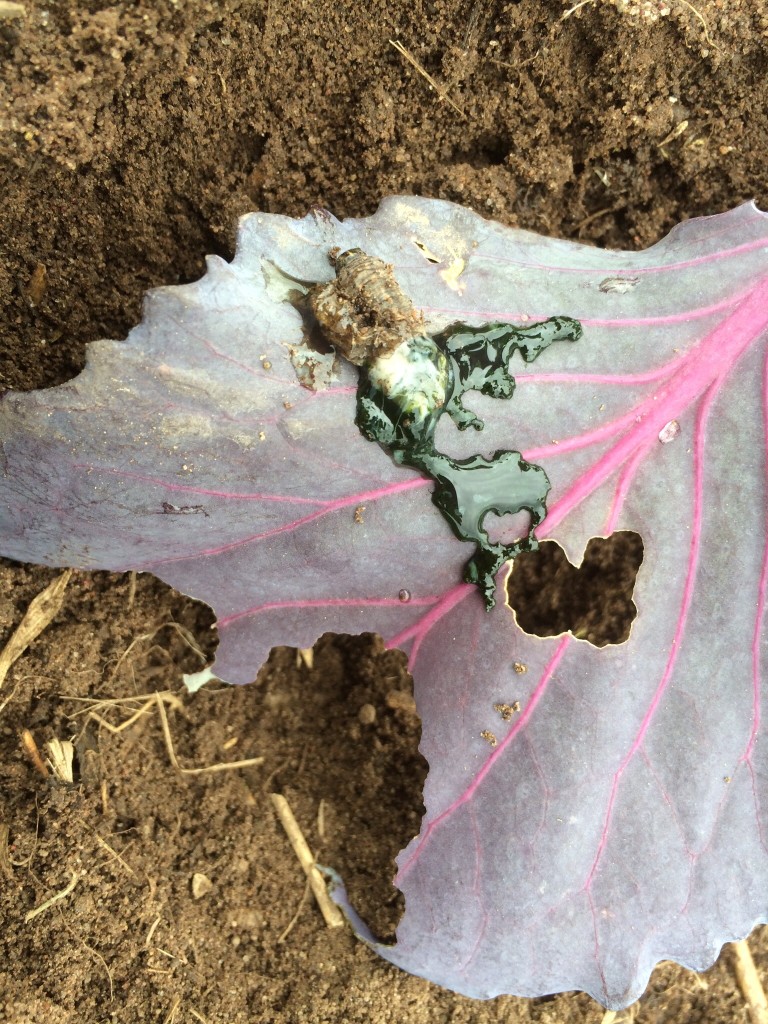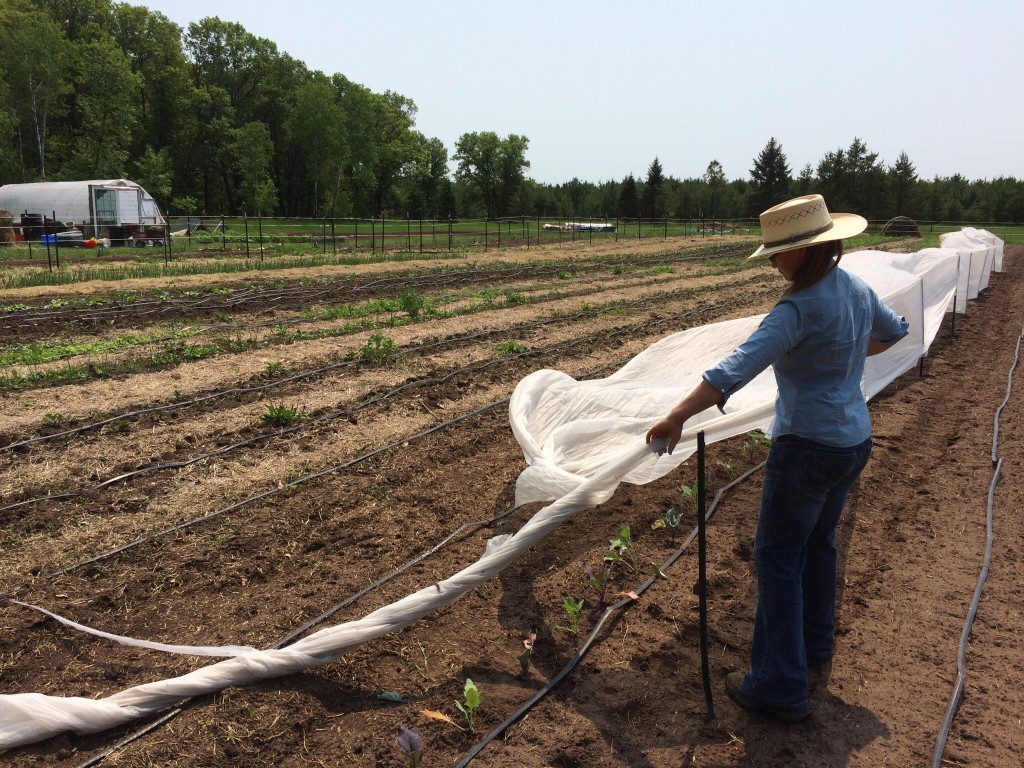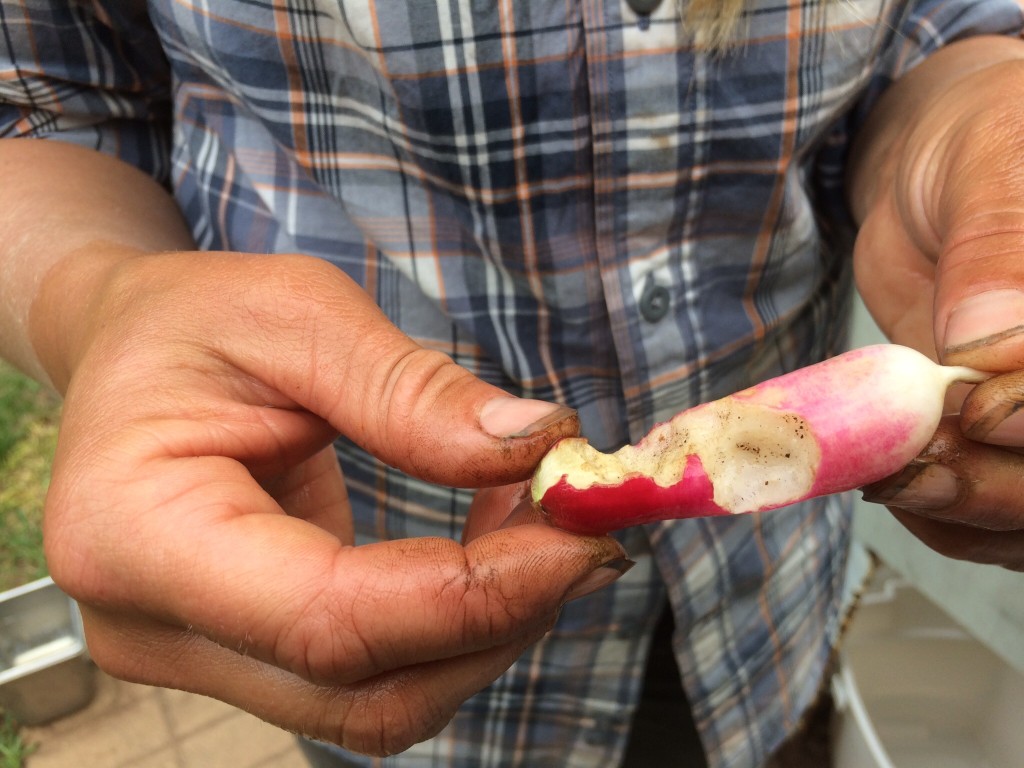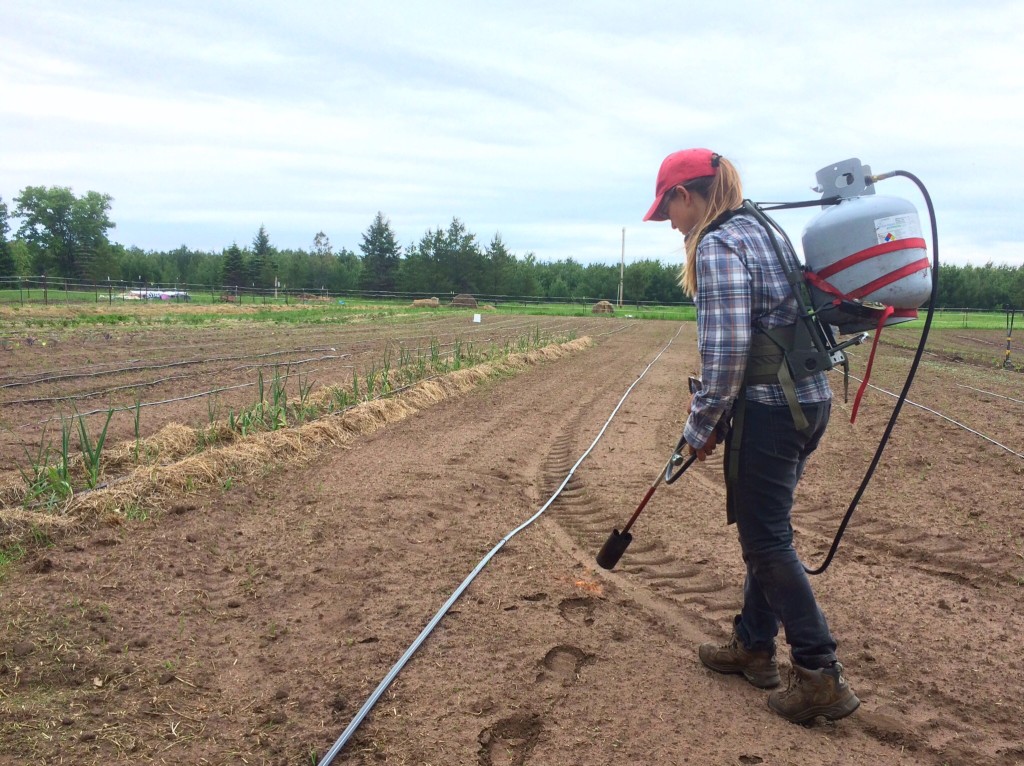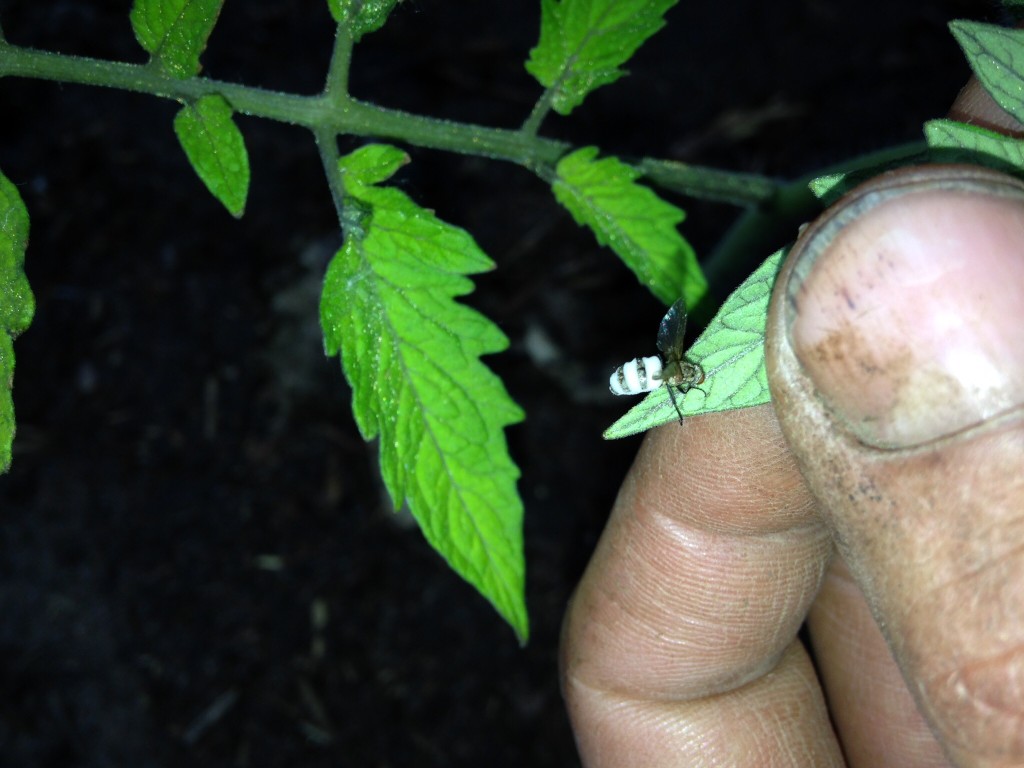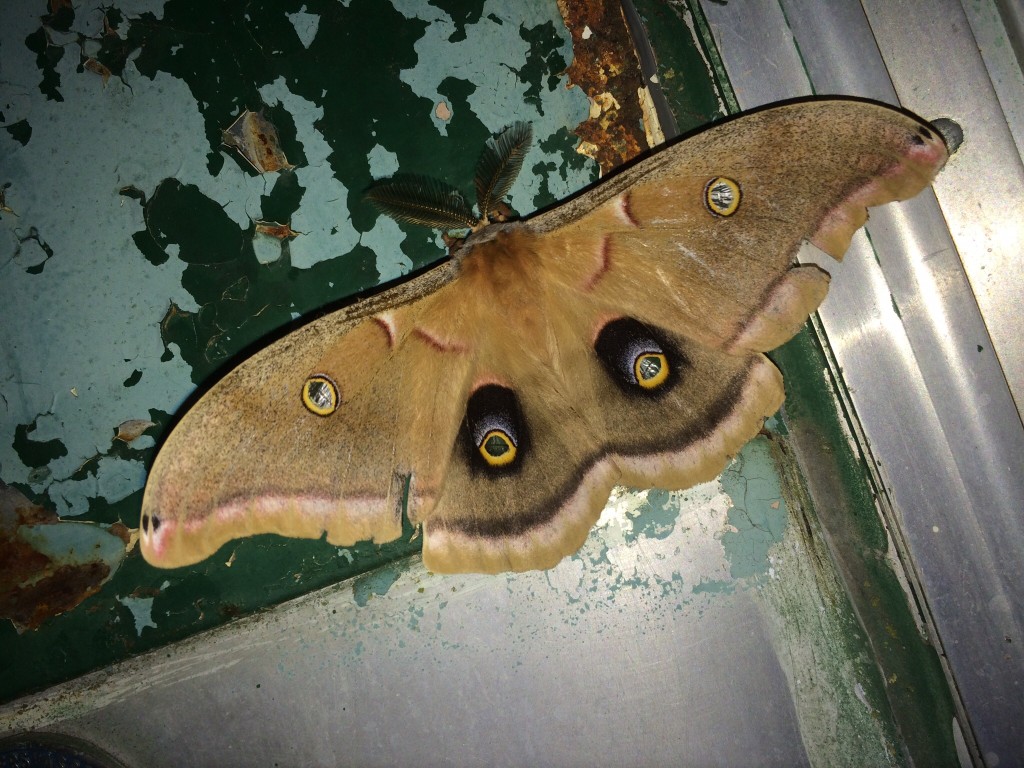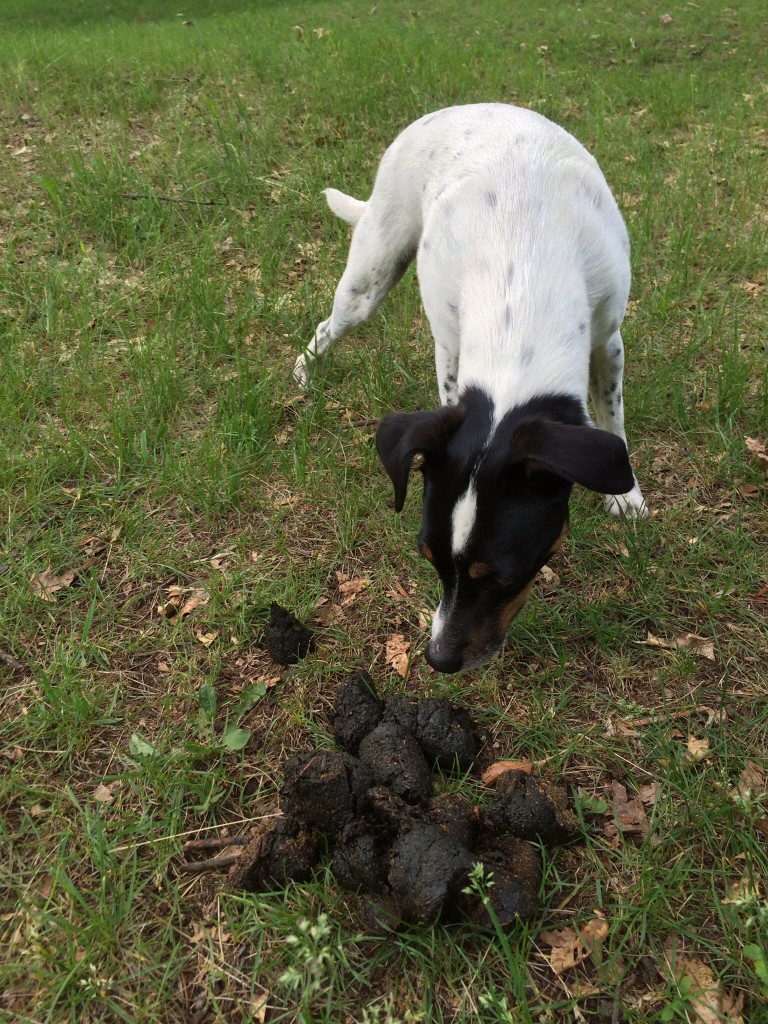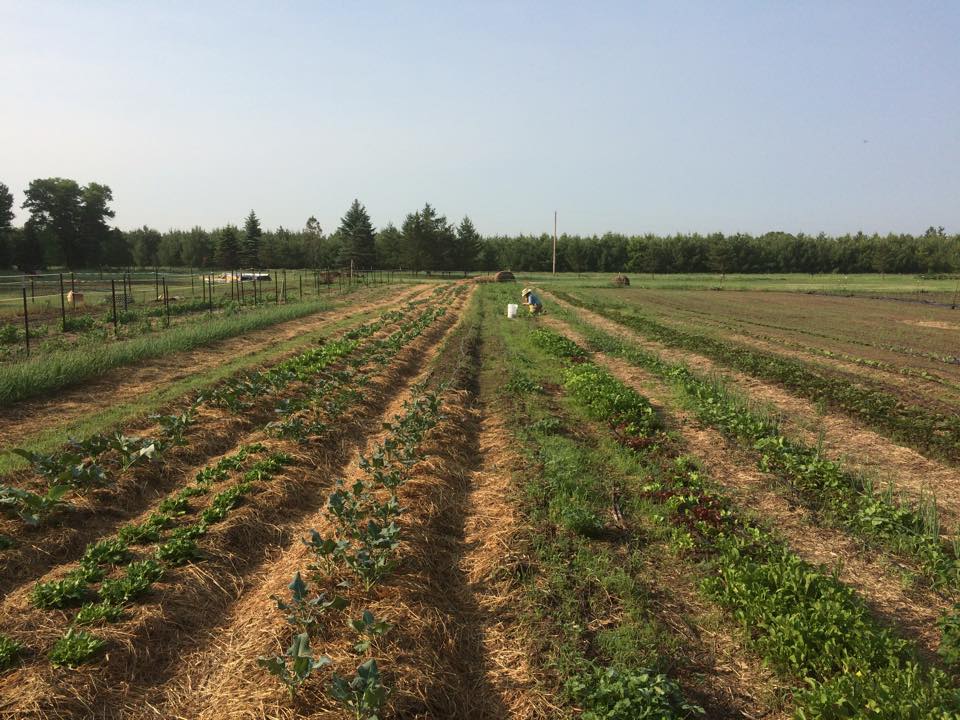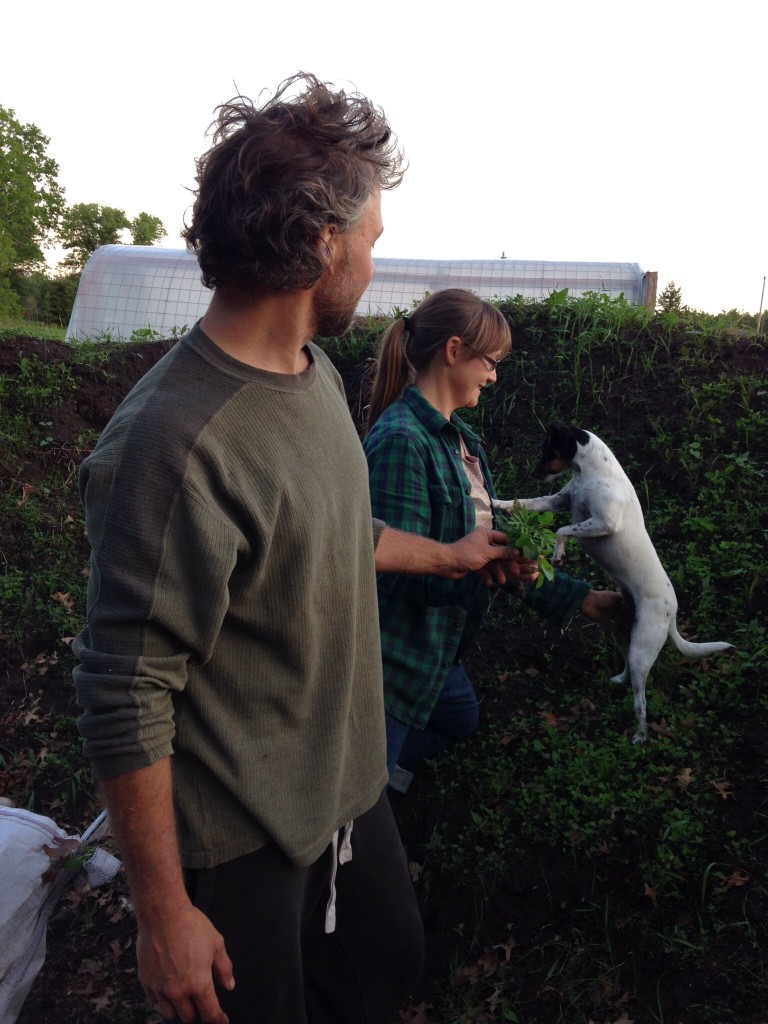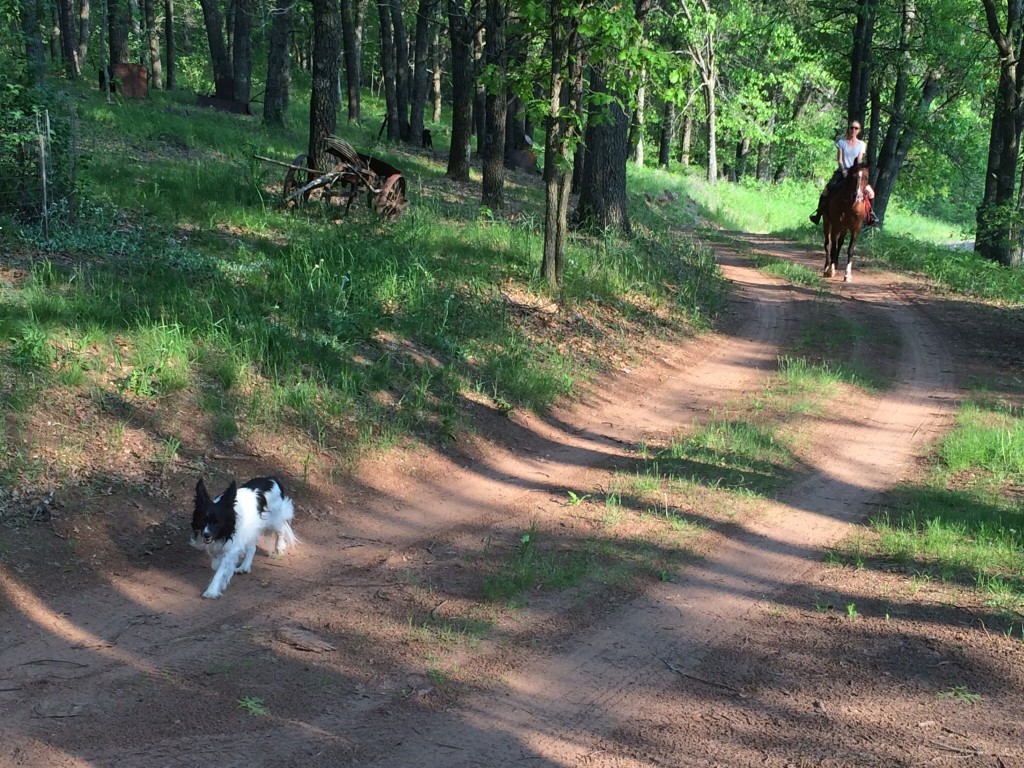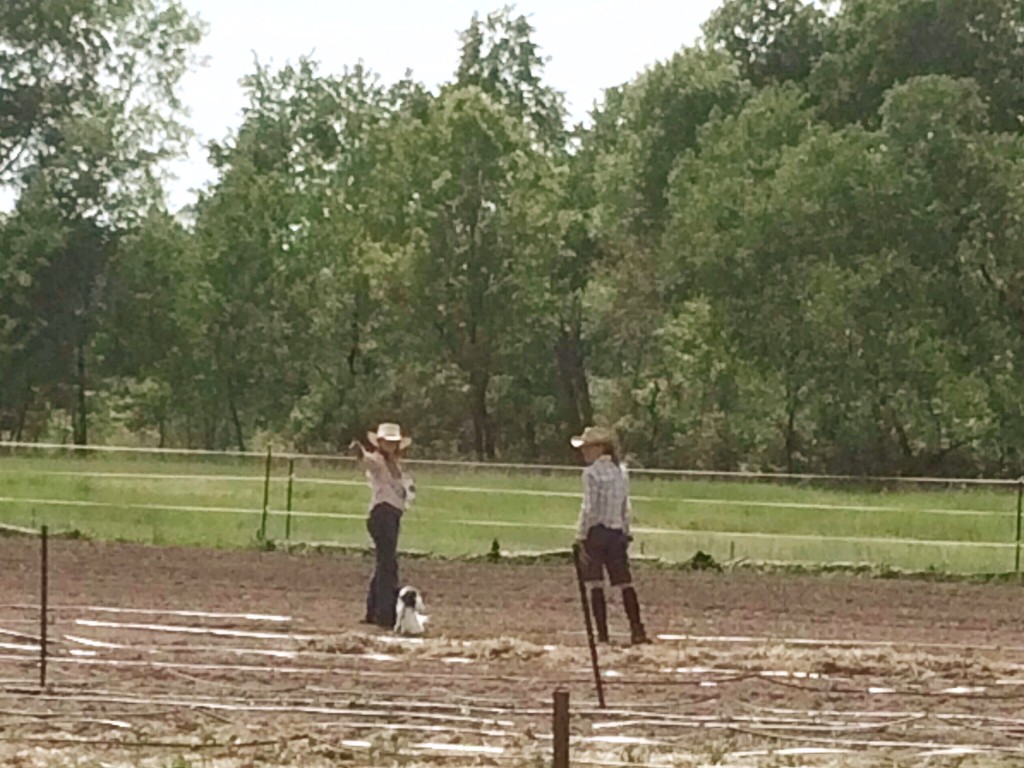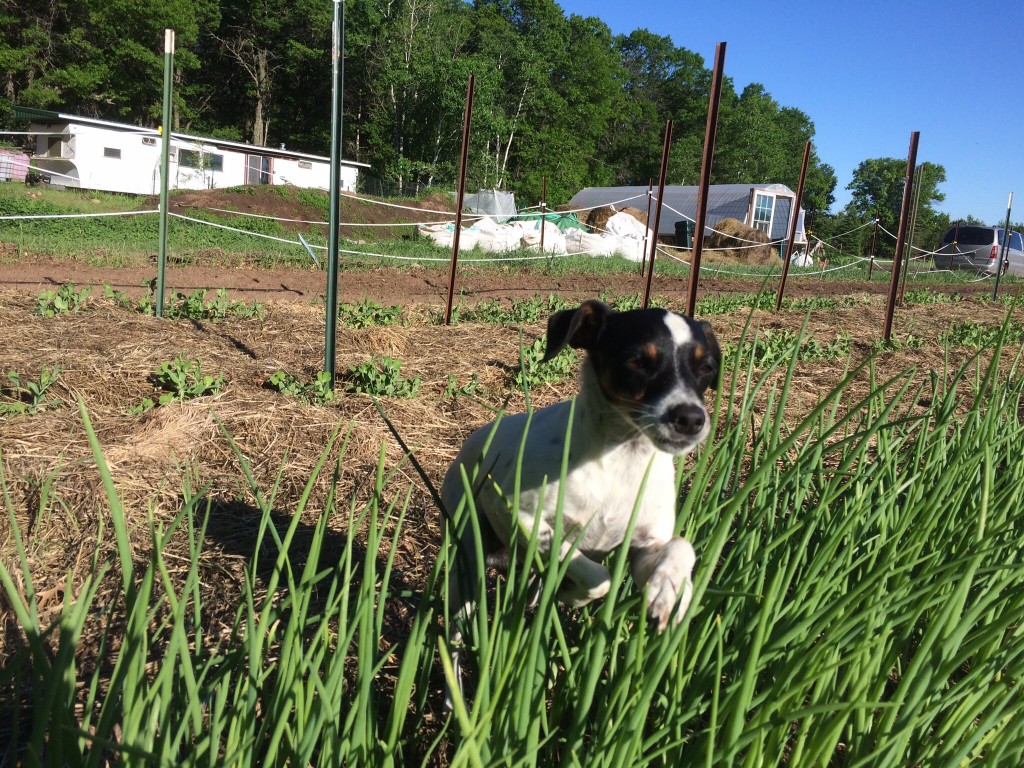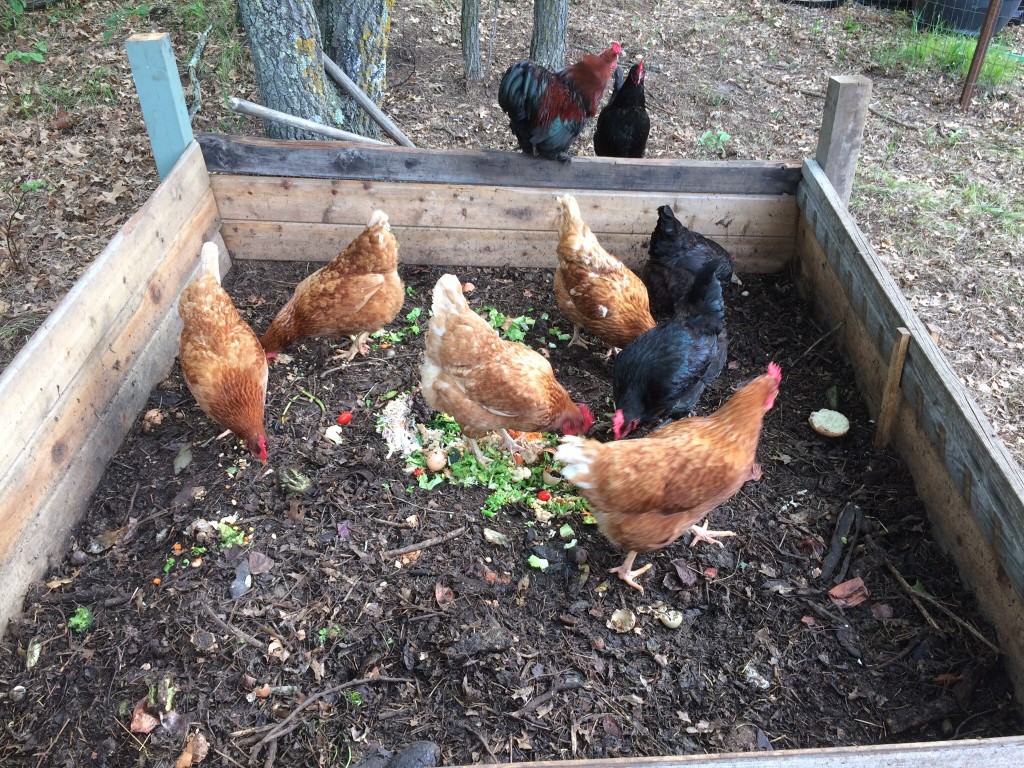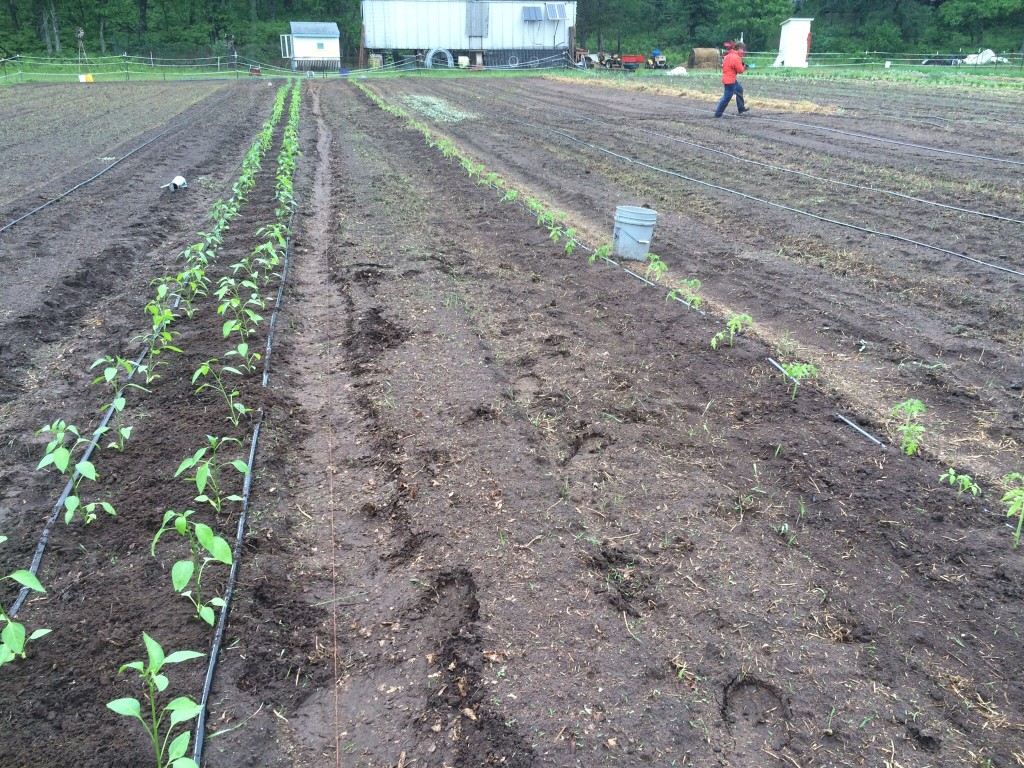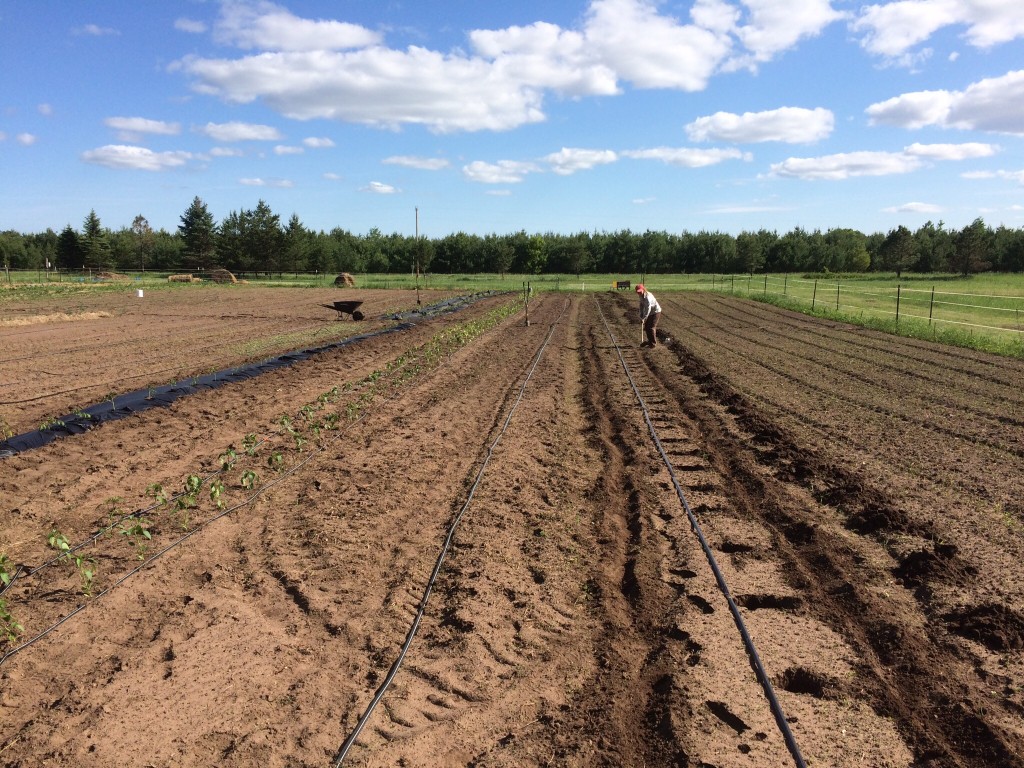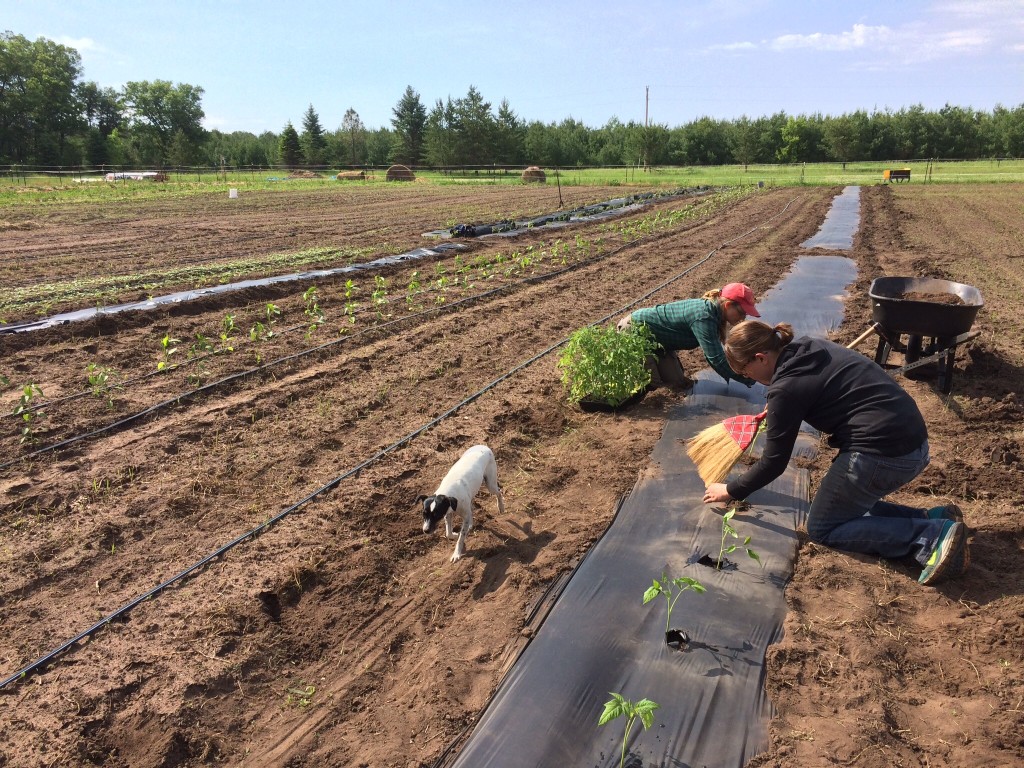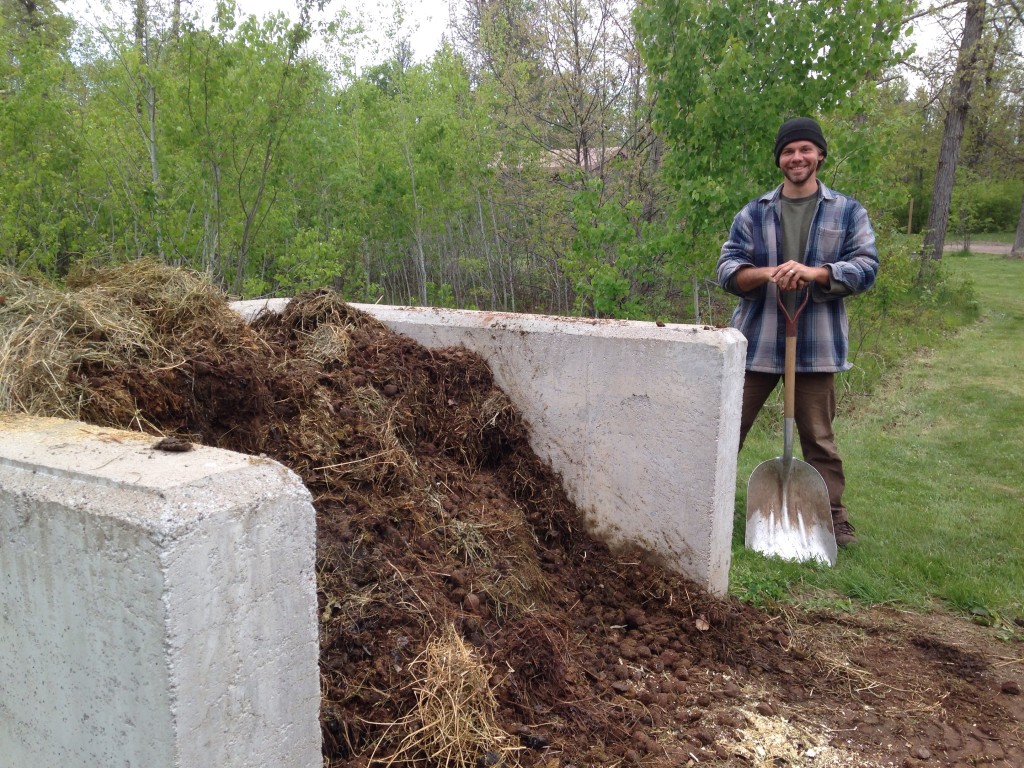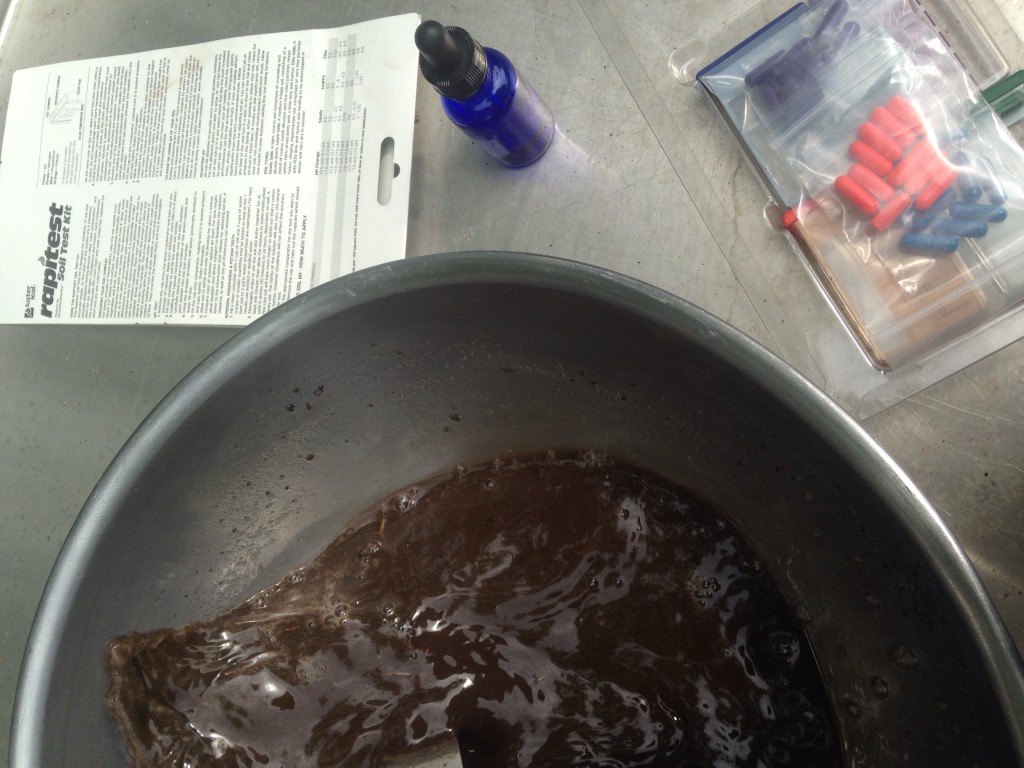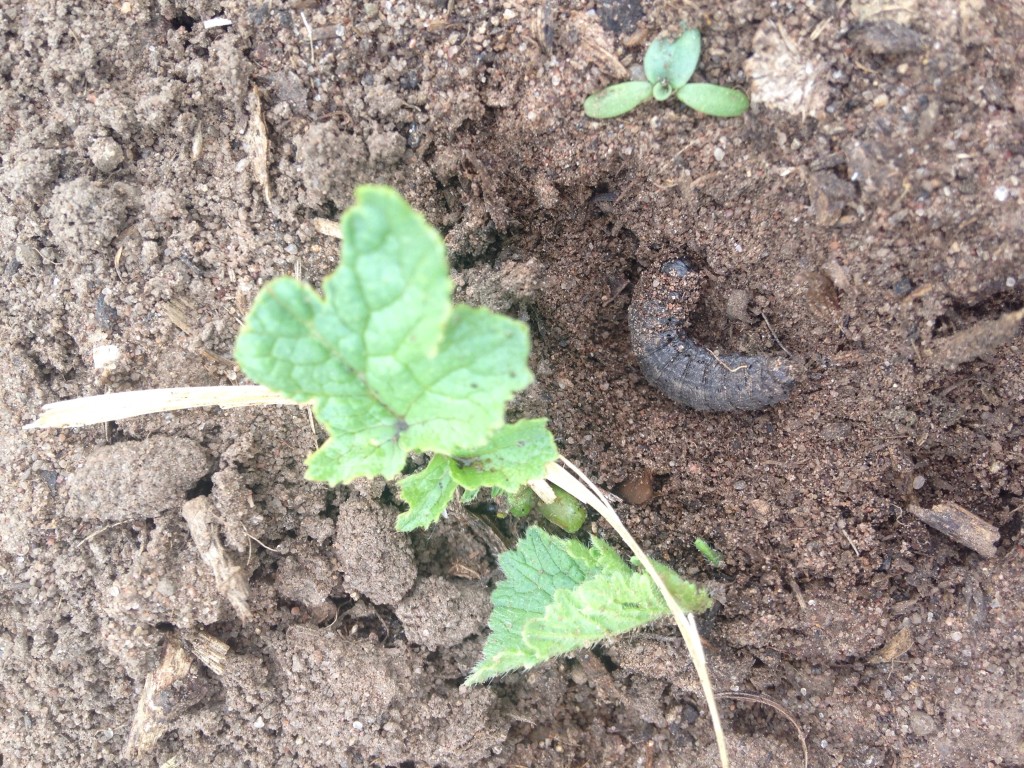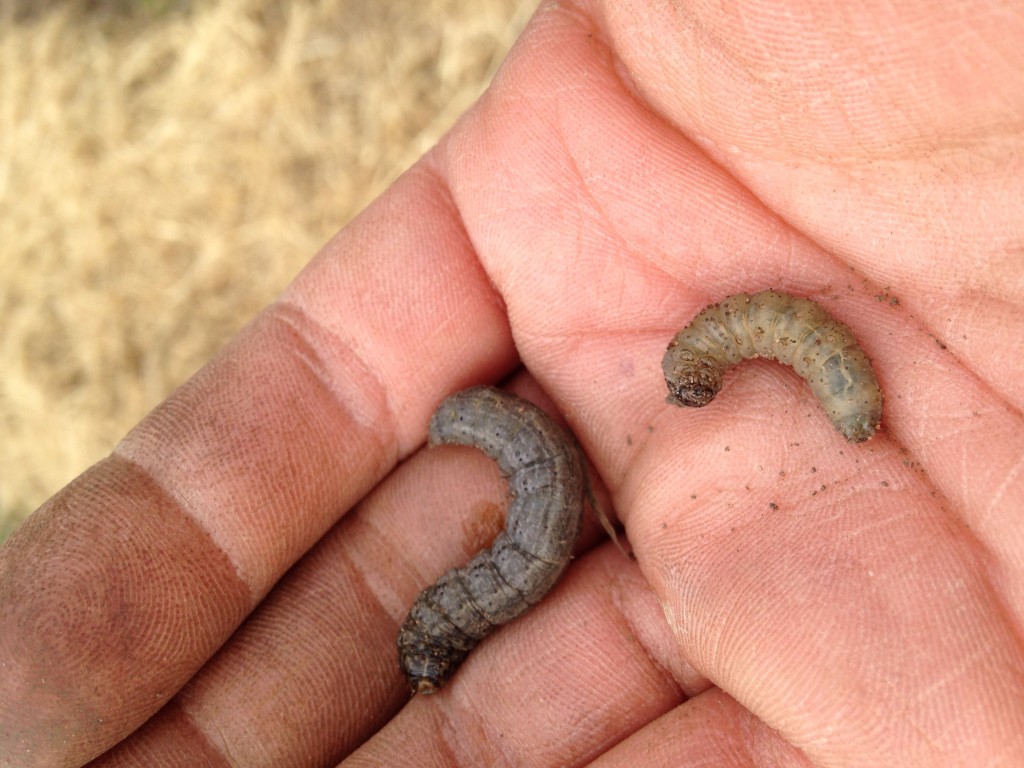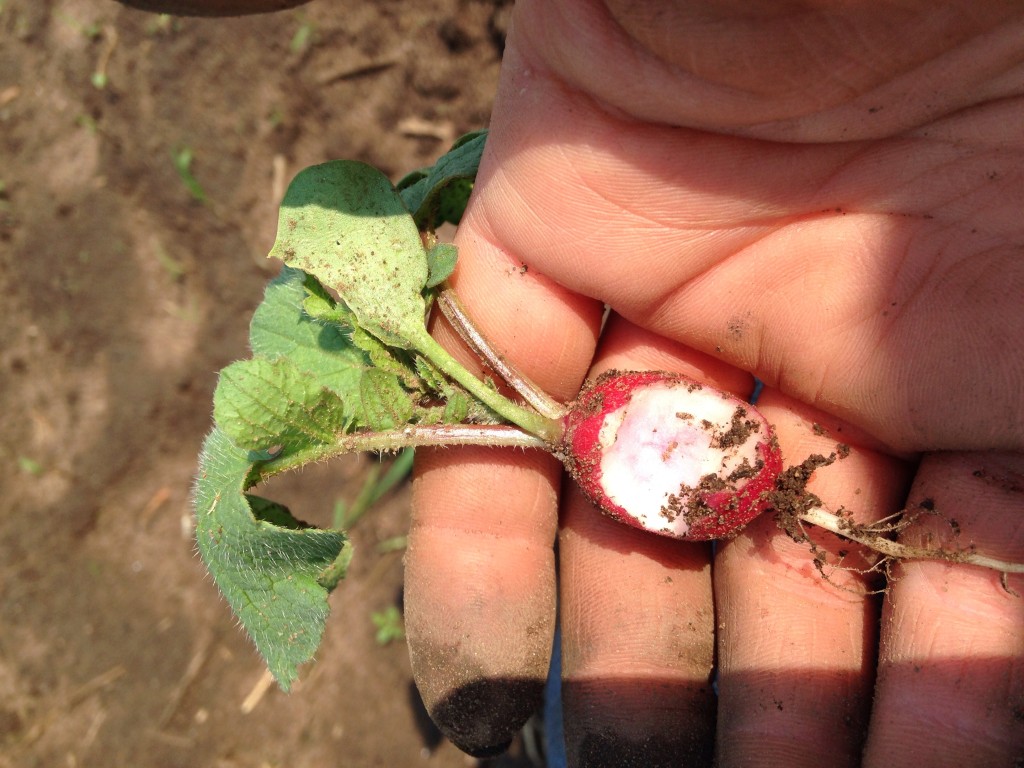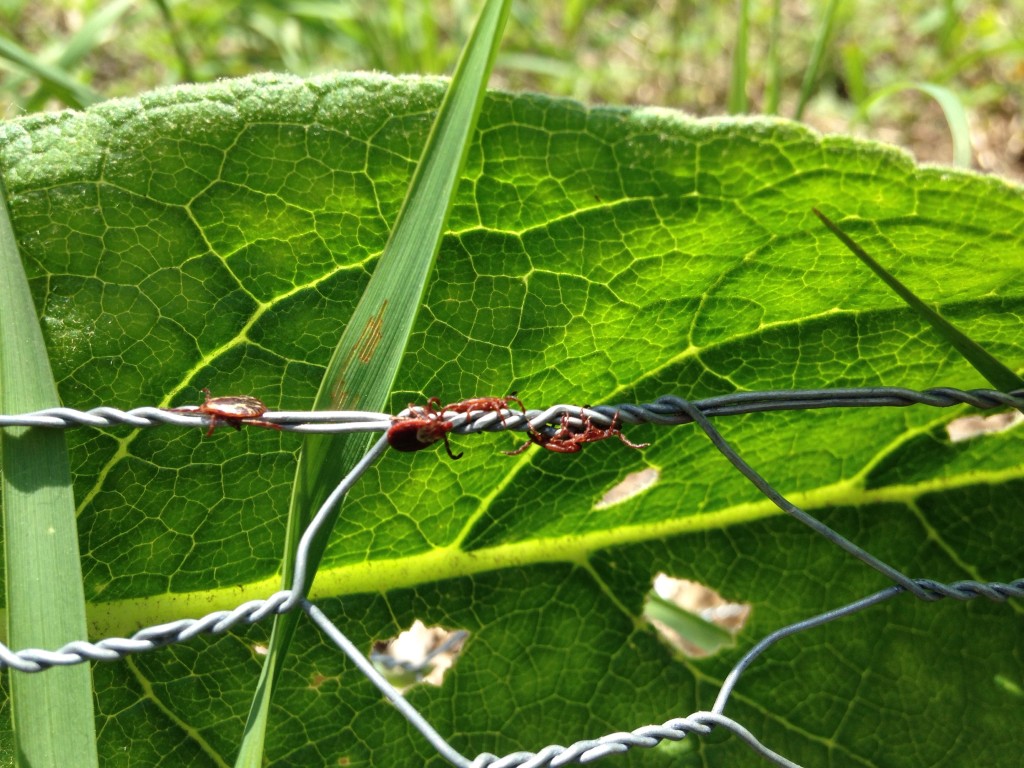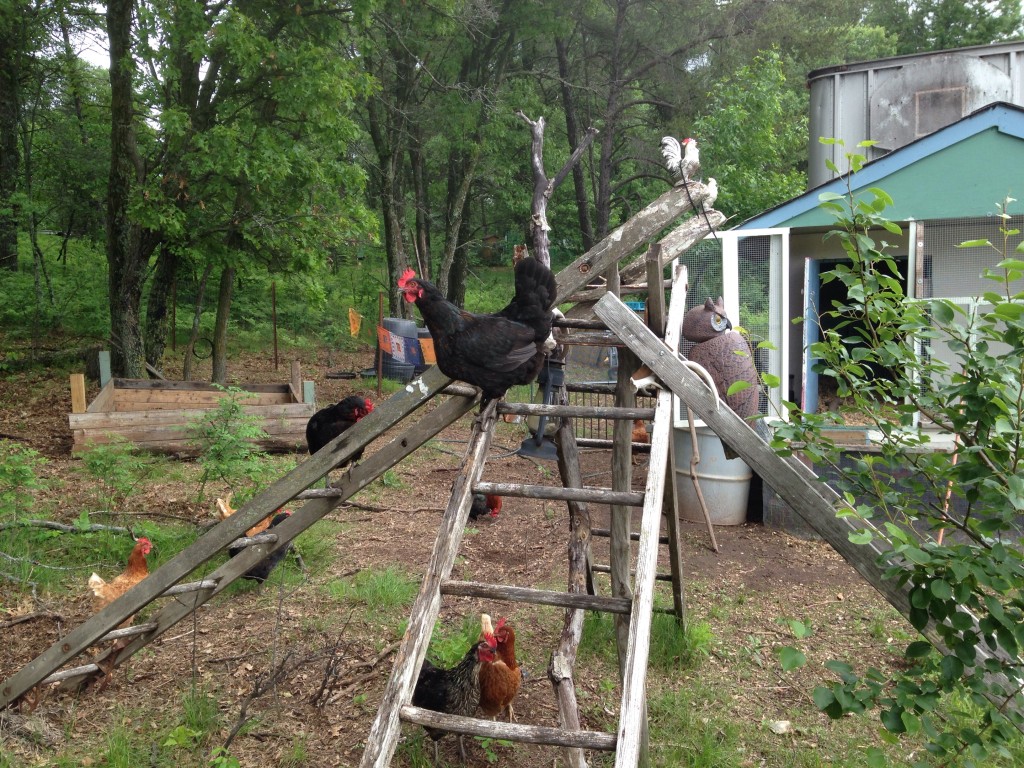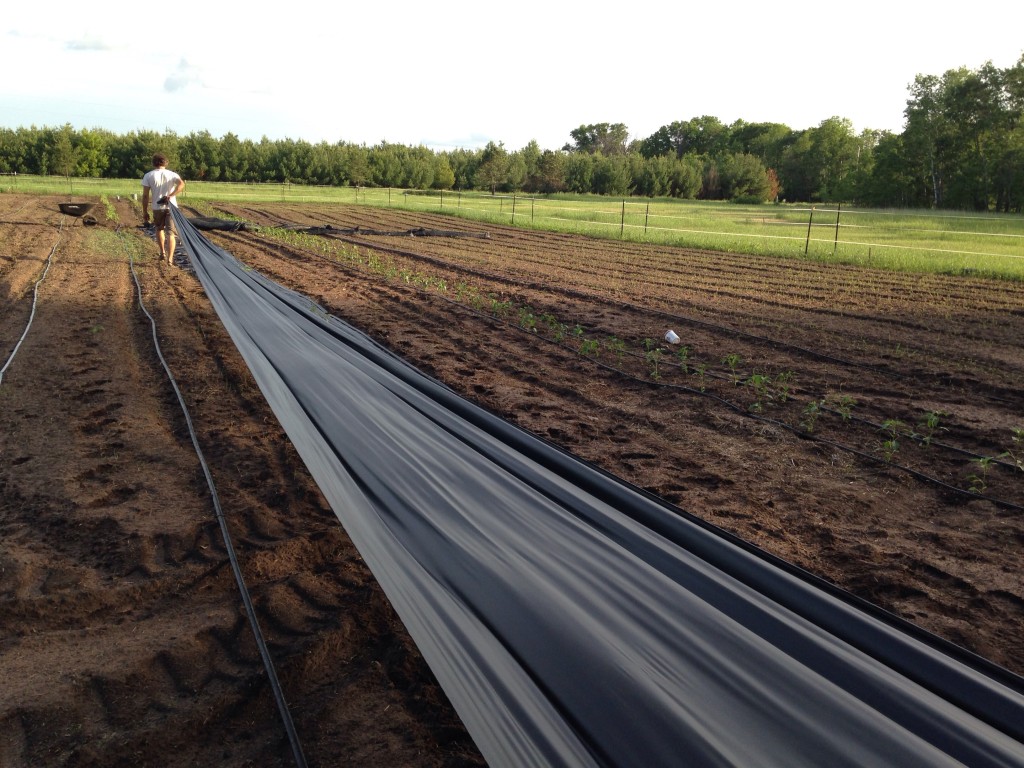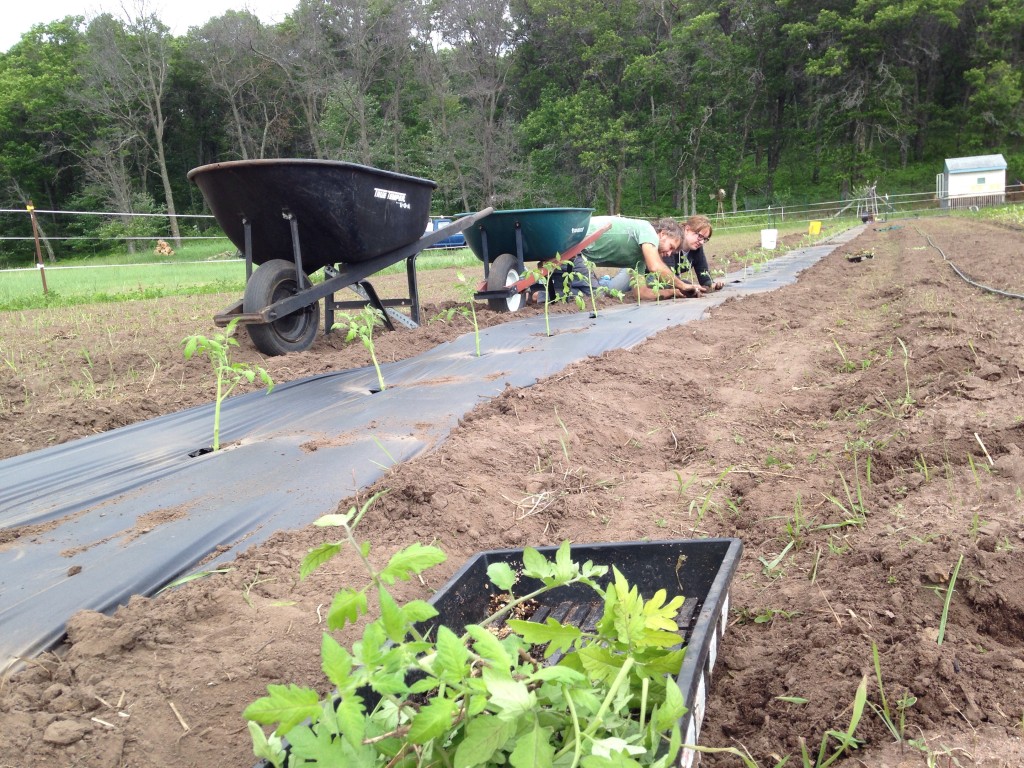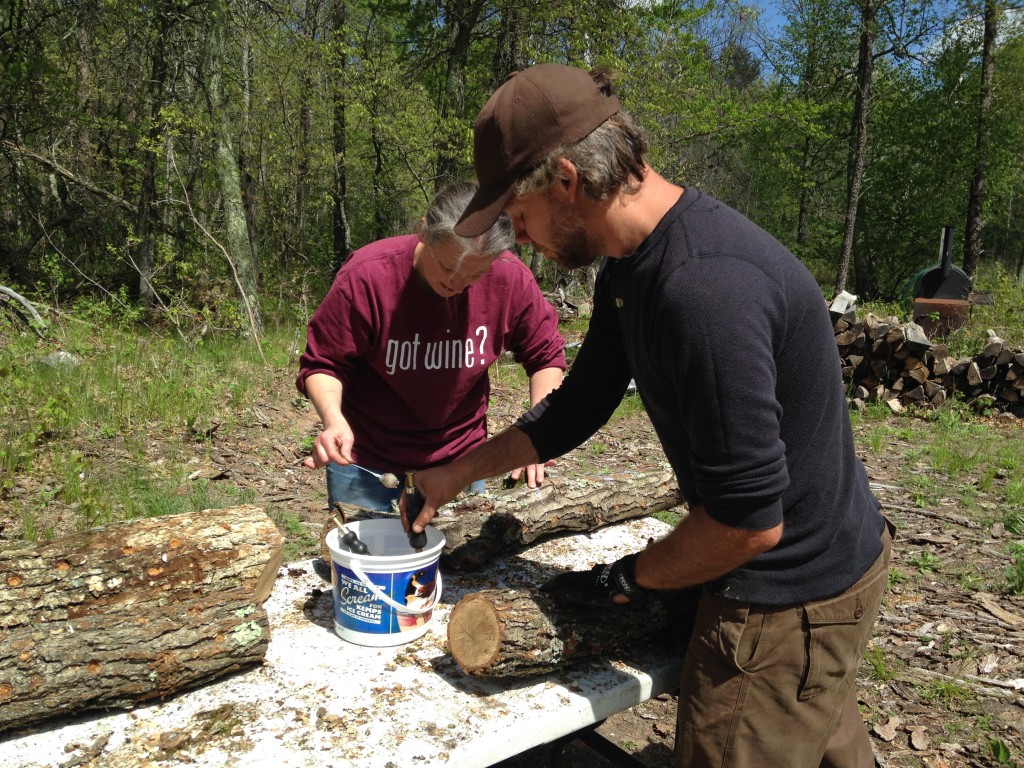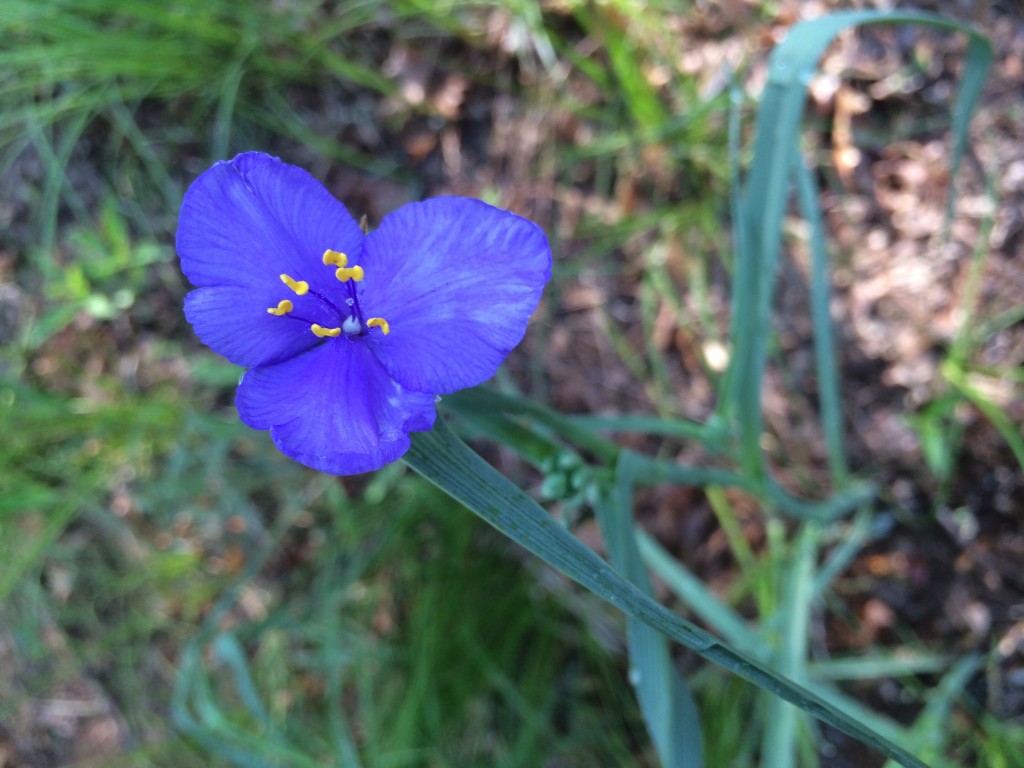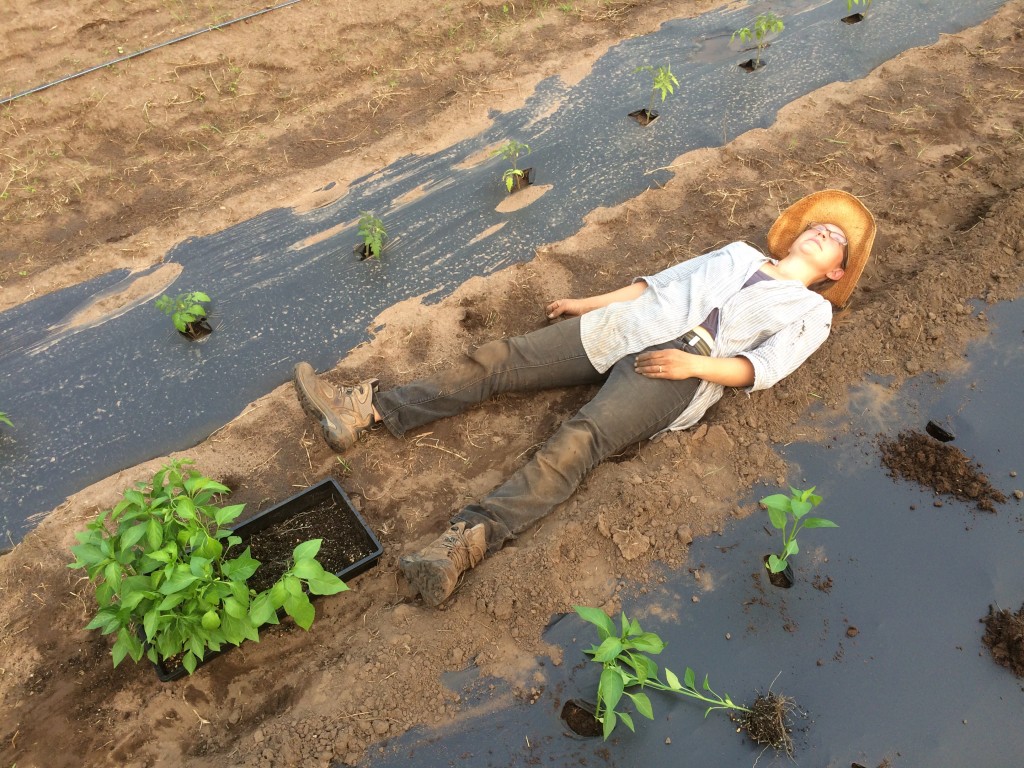Week One Members’ Newsletter
It was a beautiful summer day for our first harvest of the year; over 90 and sunny, with a slight breeze and little puffy white clouds. We got out early to get the leafy greens harvested, before the radiance could rob them of their juicy vitality.
Or us of ours, for that matter.
It was a long cool spring, but now things are really heating up – lows are in the 50s, soil temps are around 70, we’ve stopped checking the weather obsessively for forecasted freezes, the windows stay open at night, and taking a cool shower can sound appealing.
We like it, and so do the plants.
Things really turned around recently, or felt like they did at least.
Even just a week ago, we were feeling pretty bleak about the field. It seemed that everything was being devoured and decimated. Everything we’d tried to do to improve the situation somehow made things worse. We went careening through various stages of grief; denial, anger, acceptance, determination, and cannibalism. Storm clouds loomed and we battened the hatches. But then the darkness broke and the sunshine busted out.
As it does.
The sad brassicas and lettuces revived. Voles, while still active, did their damage within acceptable parameters. The cut worms increasingly (if not entirely) were squished by us, eaten by birds, or leveled up and became immobile chrysalis types that don’t make nightly surface raids. The kohlrabi survived emergency untransplantation and retransplantation. The quack grass agreed to a draw for the season. (We’re not sure if we trust it, but it’s good for now.) Legions of plants graduated out from the greenhouse – tomatilloes, ground cherries, tomatoes, peppers – and we even planted a bunch of wildflowers and clover. WWOOFer and HelpX requests (to come stay on the farm and help out with the work) came rolling in, after a long period of silence. It rained, a lot, but with good hot sunshine between deluges.
Things feel good.
The woods around us are unfolding in a kaleidoscope of life. The field looks lively and bursting with wonderful potential – quite welcome really. Although I’d gotten well along toward accepting that my fate was to toil in a desolate wasteland (“why do you think they call it ‘The Barrens’?”), and even finding humor and beauty and meaning in it – I’d rather not, really. I love our living field and growing plants, and Spring has sprung,
And it’s already time to start the fall broccoli crop!? Holy crap.
Box #1: Early Risers
Please return your empty boxes every week! We need them! We want them! We don’t want to buy more! Thanks. :)
- Radishes – About 75% of the radishes we’ve tried planting (in multiple waves) have fallen to the forces of the cutworms and voles. And then the survivors were recently subjected to sudden intense rainfalls (one day we got 1.5″ drenching, a short respite, and then another 1/2″ fell in the course of one soaking half hour) – like tomatoes, radishes absorb water uncontrollably and split when they expand too quickly. But they’re still good!
- Radish Greens – Great in a pesto. Really; make some pesto with these things; recipes abound on the googlebot. Or if you’re the oppositional type, cook em and do something else – chop em up with the onion whites and sautee them together, add that to scrambled eggs or into an omelette. They hold sauces well, so they’re good to sautee with other vegetables.
- Sunflower Greens – I like these best fresh, but some folks also like ’em cooked. Use in salads, sandwiches, stir fries, wraps – or munch them alone as a snack.
- Early Riser Salad Mix: A tasty mix of the first arrivals up in our chilly climate: pea tips, Arugula, Lettuces, Wild Spinach (Lamb’s Quarter), a tad of Mizuna. Farmer Kristin’s Serving Suggestion is to use a green onion dressing, but anything you like will do just fine. The arugula has little holes in it; these are harmless and ickless, just voids left by the organic gardener’s companion, flea beetles. We will be battling them with Neem Oil this week … But in the meantime, don’t hate the holes.
- Green Onions – Use both the tops (similar to chives) and the bottoms (mini onions basically). Tops can be used in a dip with sour cream or cream cheese, or added into your radish leaf pesto! The greens don’t stay fresh as long as the white bottoms, so use them first! Serve with Booker T and the M.G.s.
- a Jar of Preserves – Depending on your predestined fate, you have received either marmalade we made with fresh oranges in Arizona in March, cactus jelly made from prickly pear cacti fruits in Texas in January , preserves from raspberries that we picked fresh from a neighboring farm, sweet pickles made from pumpkins we grew last year, or garden huckleberry (aka Wonderberry) syrup or jelly or sauce, from last year’s field. Or maybe something else that we can’t remember right now.
(Note: The first week is a light box – the early spring was dry, and the season was slow to warm up. Really, the first box is always light, and even the second and third ones are too – we have a short growing season and there’s not a whole lot growin’ on. Fear not; future boxes will be heavier and heavier …)
.
Recently in pictures:
.

